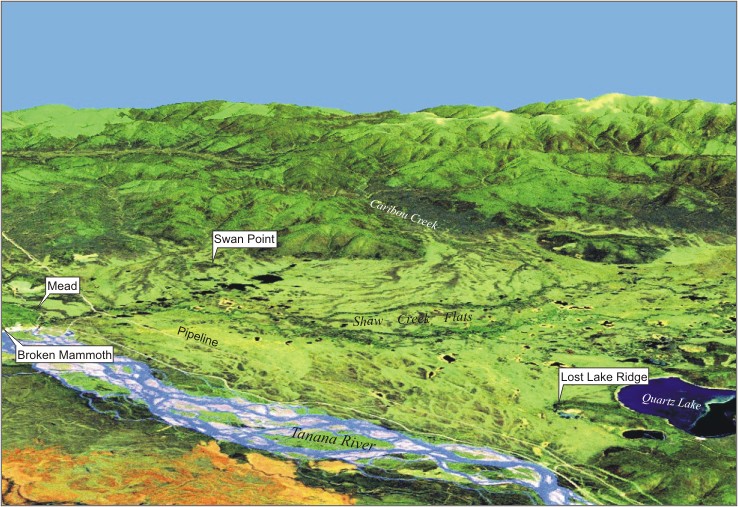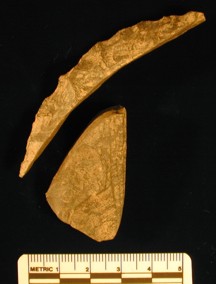Swan Point |
The peopling of North America debate has continued to be a topic of global interest. Theories include single and multiple migrations, coastal and inland routes, and slow and rapid dispersal with the populations originating in Siberia and Europe (cf. Dillehay 1999; Dixon 2002; Fiedel 2000; Stanford and Bradley 2000). Archaeological evidence, as well as linguistic, dental, and genetic data has been invoked in support of these theories (cf. Goddard and Campbell 1994; Schurr 2002, 2000; Turner 1994). In the midst of this plethora of theories, the Bering Land Bridge model of early entry into America must not be dismissed. Strong evidence supports the case that some people migrated from Siberia to Alaska via the Bering Strait. This remains one of the simplest theories and is supported by archaeological, linguistic, genetic and dental evidence.
Until recently, the life way of ancient Alaskan cultures has been largely a matter of conjecture, based upon vegetative reconstructions and the limited paleontological record, dating largely from full-glacial times. Subsistence is assumed to have been based on big game, i.e., remnant Pleistocene megafauna. Discovery of the Broken Mammoth, Mead, and Swan Point sites near Shaw Creek in the middle Tanana Valley (Holmes 1990, 1991, 1996, 1998, 2001; Holmes and Yesner 1992; Holmes et al. 1996; Yesner et al. 1992; Crass and Holmes 2003, 2004) and the renewed investigation of the Gerstle River site (Potter and Holmes 2000; Potter 2002) have provided new data to evaluate this hypothesis. These Tanana Valley sites represent “overlook” sites from which game could be spotted and a variety of microenvironments exploited. They were preserved because of proximity to streams that supply aeolian (loess) sediments that buried the occupations within paleosols (Thorson 1990; Dilley 1998). It is significant that Swan Point is not only the oldest site (radiocarbon dated between circa 15,000 and 14,200 cal. BP), but also contains microblade technology throughout the multiple components. This makes the site comparable with the other Tanana Valley sites, yet distinctive- a position that may be advantageous for testing theories on site formation, group mobility, and landscape exploitation patterns.
Generalized profile with radiocarbon datesMicroblade technology, exemplified by the Dyuktai culture of Siberia, has been seen as linked to early cultures in Alaska, e.g., Denali complex and American Paleoarctic tradition. Clovis-like characteristics (e.g., blades, bifaces, scrapers and gravers) found in the Nenana complex, have been argued as evidence for a regional presence of the Paleoindian tradition (Goebel et. al. 1991). Swan Point appears to have aspects of both of these complexes at the earliest levels, as well as multiple occupation levels that range from the terminal Pleistocene to the late Holocene. Swan Point has the potential to provide information on past life ways that would be of interest locally, regionally, and hemispherically. (references)
|
Lower Shaw Creek valley archaeology sites. large view
|
|---|
Swan Point microblade core and ridge spall |

